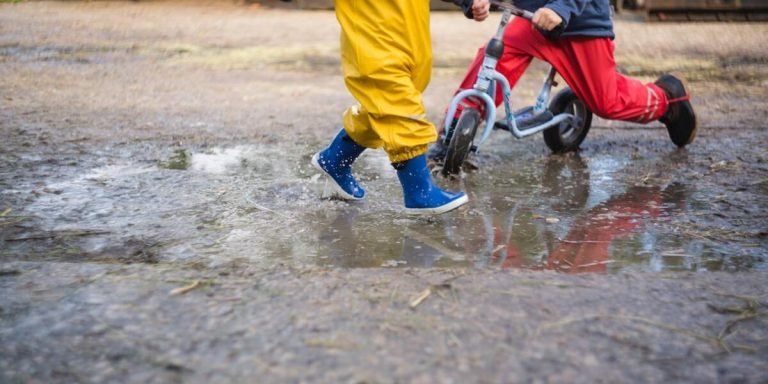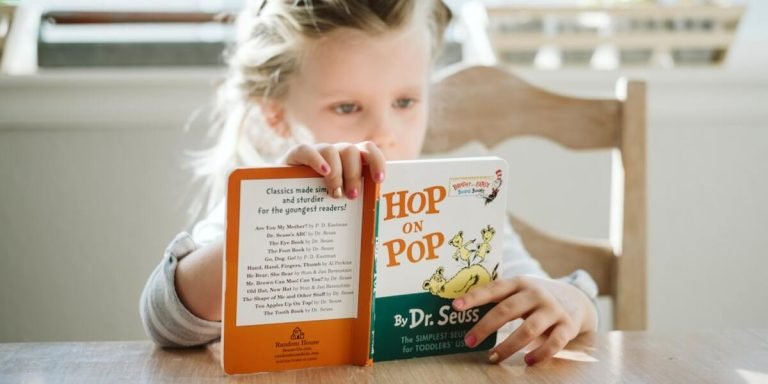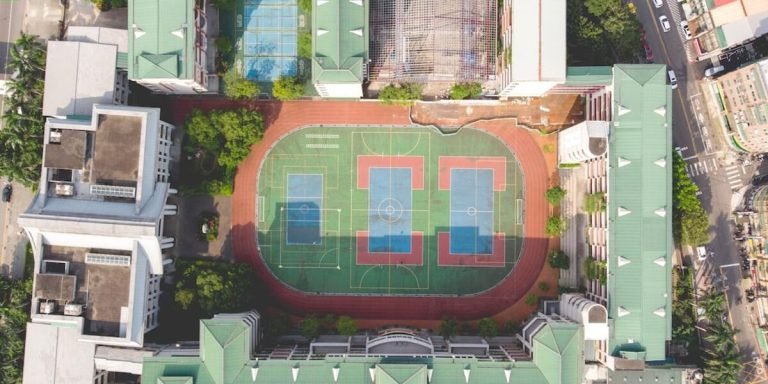Kinesthetic Awareness: Unlocking Your Child’s Potential in Learning and Play
Kinesthetic awareness plays a crucial role in learning and play among children. It’s the ability to perceive body position, movement and balances that assists in developing motor skills required for intricate tasks such as walking, running or dancing. Not only does it contribute significantly towards physical competence, but it also enhances cognitive abilities by laying foundations for key aspects of early childhood education like reading comprehension and problem-solving.
Understanding this facet of your child’s development can help you foster an environment conducive to his/her overall growth. Activity-based learning is an effective method to improve kinesthetic perception in young learners which paves way for better understanding, retention and application of new information acquired through experiences. Exploring more about how incorporating activities boosts cognition will unlock untold potential in the realm of their education while making ‘learning’ fun!
Did you know?
Did you know that increasing a child’s kinesthetic awareness can significantly enhance their cognitive abilities, leading to improved academic performance and creativity? This is according to the American Council on Exercise.
The Role of Kinesthetic Awareness in Enhancing Activity-Based Learning
In today’s fast-paced educational landscape, the integration of technology has brought forth significant changes. The role of kinesthetic awareness in enhancing activity-based learning is an up-and-coming trend seen across classrooms globally. Kinesthetic awareness refers to a learner’s ability to understand their body movements and translate them into cognitive knowledge.
In essence, it engages both the physical and mental aspects which leads to more comprehensive understanding.
The advent of innovative technologies such as interactive whiteboards, digital tablets for drawing or writing, virtual reality (VR) headsets have all played pivotal roles in promoting making activity-based learning more immersive and thus fostering enhanced kinesthetic perceptions among children. These resources offer engaging ways for students not just interact with their studies but physically connect that enhances overall comprehension.
Understanding the Connection Between Movement and Cognitive Development
In the realm of childhood education, ‘kinesthetic awareness’, also known as body awareness, plays a pivotal role in fostering effective activity-based learning. It is essential to understand this key concept when we consider integrating technology into our teaching methods.
Kinesthetic awareness refers to one’s ability to sense their body’s position and movement. This inherent cognition aids children not only in perfecting motor skills but also contributes significantly towards cognitive development.
Central to kinesthetic learning theory is the belief that children learn best through physical activities such as moving, handling objects or performing specific tasks. By actively engaging multiple senses at once – touch, sight and hearing – young minds can process information more efficiently and effectively than they might by using just one sensory system alone.
One prime example includes virtual reality simulations providing students opportunity perform gestures movements real-life setting without having step out comfort classroom Not only does exercise provide practical application theoretical knowledge additionally it helps fine tune child’s spatial alignment proprioception core components ‘body awareness’.
Strategies to Incorporate Kinesthetic Learning in Educational Settings
Incorporating kinesthetic learning strategies in educational settings can significantly enhance activity-based learning. Kinaesthetic awareness serves as a crucial factor to bridge the gap between traditional and modern teaching methodologies, thus transforming classroom dynamics.
To initiate this transformation, educators need to be well-equipped with effective strategies tailored towards enhancing students’ understanding through physical engagement.
With technology integration becoming increasingly prevalent in education in 2023, teachers can leverage interactive technologies like virtual reality (VR) and augmented reality (AR). Through these mediums, learners gain firsthand experiences which ultimately bolster their kinesthetic awareness.
Active breaks during lessons allow children time for movement while retaining their focus on studies—these might involve quick exercises or stretches encouraging bodily motion without derailing from academic pursuits.
By applying curricular content within real-world contexts facilitates practical application leading children’s kinetic comprehension levels increase drastically.
Implementing Activity-Based Learning for Various Age Groups
Implementing activity-based learning for various age groups enhances the learning experience, especially when enriching it with a sense of kinesthetic awareness. Nowadays as technology integrates deeper into education systems worldwide, educators and parents should be keen to harness this immersive form of teaching style. It is not simply about allowing children to play; rather, it’s incorporating strategic activities that encourage curiosity, creativity and encourages interaction.
Incorporating technology in such an environment can amplify these effects remarkably. For instance, virtual reality (VR) games that require physical movement can help build children’s kinesthetic awareness while keeping them engaged in the educational content they contain. Using VR headsets or augmented reality applications on handheld devices also brings flexibility for diverse age groups – from preschoolers experimenting with shapes and coordination to high school students conducting complex experiments virtually.
Speaking specifically about early childhood education which lays foundational cognitive abilities – a time filled with exploration –activity based learning complemented by technological tools offers great potential benefits including improved motor skills development due to consistent use of senses during 3D simulations or robot-guided tasks.
Tailoring Kinesthetic Activities to Elementary School Curriculums
Implementing Activity-Based Learning for various age groups warrants understanding of children’s developmental needs. One potent tool in this endeavor is kinesthetic activities, which can elevate a child’s sense of ‘kinesthetic awareness’, especially if tailored skillfully to elementary school curriculums.
Kinesthetic learning involves engaging students’ physical movement and tactile senses as they learn. It goes beyond traditional classroom teaching methods by incorporating practical tasks into the curriculum that challenge kids physically while enhancing their cognitive abilities simultaneously.
In an era where technology integration in education has become crucial, educators need to balance digitized instruction with hands-on experiential learning styles such as kinesthetic activities. In 2023 and onwards, these two elements — tech-based study tools and activity-driven techniques — will coalesce more streamline than ever before.
Consider ways you could introduce ‘balancing games’. Balancing activates regions of the brain responsible for concentration, problem-solving skills, spatial orientation – all necessary aptitudes useful throughout life. Digital platforms offer numerous interactive balancing games designed adeptly for different learner levels within primary schooling segments.
Another exciting avenue lies in crafting exercises involving body graphs or human anatomy diagrams integrated with augmented reality (AR) applications on digital devices like tablets or smartphones—kids trace parts over AR images visually projected onto them—an innovative way to teach biology whilst boosting their kinematic consciousness!
Adapting Movement-Based Methods for Higher Education Environments
As the evolution of education continues to integrate technology, adapting movement-based methods for higher education environments becomes an essential component. Activity-Based Learning (ABL), with its focus on kinesthetic awareness, has proven successful in engaging students and enhancing comprehension not just at basic but also high levels.
Technology brings a fresh dimension to these techniques by making them more accessible and interactive. Consider how Virtual Reality (VR) systems can mimic travel experiences or science experiments right within the confines of a classroom; such advancements bring new life into ABL.
1. Interactive Whiteboards: An asset for classrooms that allows hands-on interaction with learning materials through touch-sensitive screens which bolsters kinesthetic awareness significantly.
2. Mobile Apps: Applications like ‘Seesaw’ or ‘ClassDojo’, create unique platforms where students participate in virtual yet activity-intensive exercises related directly to their course material whilst simultaneously developing digital literacy skills.
3.Codeable Robots: Engaging learners in coding activities using robots such as Sphero presents an opportunity both for honing computational thinking alongside physical engagement – both key elements propelling ABL forward.
Finally, integrating tech-oriented tools shouldn’t mean completely abandoning traditional methods that foster kinetic understanding – lab practicals, field trips & theater enactments are all vital parts of this pedagogical strategy even if they might seem old school compared to VR lessons & robot-led teachings!
Measuring the Impact of Kinesthetic Learning on Student Outcomes
Understanding the power of kinesthetic learning and measuring its impact on student outcomes is an integral part of today’s education sphere. In 2023, as technology continues to integrate into our classrooms, educators are realizing how movement- or action-based activities can significantly enhance students’ understanding of complex topics.
Kinesthetic learning leverages a child’s innate need for physical activity which ultimately aids in better information recall. Incorporating this teaching technique with cutting-edge technological advancements offers new possibilities by amplifying their experiential world. Augmented Reality (AR), Virtual Reality (VR) and interactive gaming systems now provide immersive experiences that resonate well with tactile learners – triggering their senses, making it easier for them to grasp abstract concepts while keeping the process engaging.
Evaluating its effectiveness revolves around certain key metrics like comprehension rate, problem-solving ability and long-term retention levels among students. Research reveals appreciable growth in these areas upon integrating kinesthetic approach via tech-enabled platforms; thus reinforcing why ‘kinesthetic awareness’ should be at the forefront when we discuss progressive educational strategies in contemporary times.
Adopting such innovative methods not only brings about qualitative changes but also instills crucial life skills – teamwork, creativity and adaptability among learners from an early age. As parents and teachers alike continue exploring ways to make education more effective yet enjoyable for children – combining technology integration along with active pedagogical styles seems most promising.
Tools and Techniques for Assessing Physical Engagement in Classrooms
One technique currently making waves is activity-based learning (ABL), which incorporates natural bodily movements as part of the curriculum delivery process. ABL often utilizes specific tools that aid in evaluating students’ level of physical engagement while teaching.
Firstly, we have interactive whiteboards: a tool already familiar to most classrooms but not fully utilized for its potential within measuring kinesthetic understanding. With touch-sensitive features allowing pupils to physically move items around on screen using their hands or styluses, these devices offer an engaging way for students to learn complex concepts through manipulation and exploration – patterns best known from our early years’ education.
Secondly are wearable technologies that are gaining popularity due to their capability in tracking movement details such as speed, position change distances among others quantitatively; providing insights about user’s coordination and balance skills – core indicators of one’s Kinesthetic Awareness.
Finally yet importantly come Virtual Reality (VR) based games designed specifically for educational purposes can prove extremely effective at capturing data related-to-your-student’s ‘physicality’. Through embedded motion sensors within VR headsets/controllers combined with real-time processing software allows us-educators retrieve metrics pertaining body-movements applied during gameplay; offering comprehensive assessment possibilities otherwise unavailable traditional classroom environments.
Long-Term Benefits of an Active Learning Approach on Academic Achievement
Kinesthetic learning, also known as tactile or activity-based learning, is the concept of teaching through engaging pupils in physical movements. In a digital era where technology integration in education has gained priority, incorporating kinesthetic awareness within this scope brings numerous long-term benefits that impact academic achievement significantly.
Firstly, adopting an active learning approach encourages greater student engagement. When learners get involved physically in lessons like demonstrations and experiments, it fosters curiosity and interest. This involvement transcends from mere passive observers to becoming partakers of knowledge creation.
Moreover, hands-on activities facilitate deeper understanding and retention. Encountering concepts firsthand makes them more tangible for students rather than abstract ideas discussed verbally or read on screens. Consequently leading to better memory recall which helps during examinations or application of learned theories.
Another benefit lies on skill development not limited solely acadically but extends towards soft skills too – such as teamwork & collaboration skills when these tasks involve group efforts; problem-solving abilities due to troubleshooting encountered challenges; critical thinking by exploring multiple ways techniques can be performed all fostered through kinesthetically aware methodology .
Conclusion
In a nutshell, nurturing your child’s kinesthetic awareness forms an integral part of fostering whole-child development. It not only enhances their learning abilities but also enriches the joys and creativity inherent in playtime. Remember that children learn at different paces – what’s crucial is to provide consistent encouragement and ample opportunities for experiential exploration.
Unleash your little one’s true potential by incorporating more tactile activities into their daily routine! Our website serves as a treasure trove of resources meant to empower you along this journey, with practical guides on educating youngsters coupled with robust support for parents and educators alike. Keep browsing through our pages to unlock more invaluable insights geared towards creating resilient learners who are ready to take on tomorrow’s challenges with enthusiasm.







